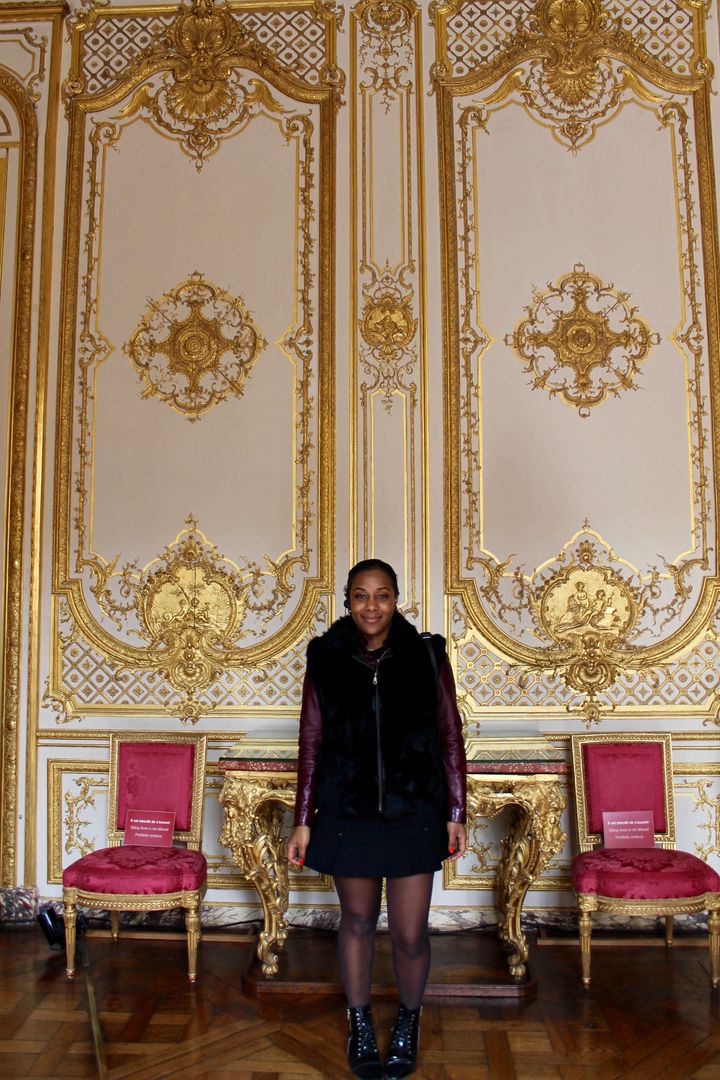
To be a harlemite and a Parisian is to be reborn again and find comfort to adapt with the culture. That’s what makes Harlem and Parisian culture similar. Creative minds have migrated to these regions to truly find their home in society, to make art , to be inspired, and to be apart of a culture that has historically been very much accepting to all races. When I first stumbled upon, Michel’s Fabre’s book From Harlem to Paris : Black American Writers in France , 1840-1980, I was curious of the title. Like my own journey, I had come to New York to be a writer and as cliche as that sounds, I made Harlem my home because it was the cheapest place I could afford with only a week to find a real home.
Although there are hundreds of black intellectuals and creatives mentioned in this book, I connected with a few. Anna Julia Cooper, a black writer who studied at Oberlin College and La Guilde Internationale in Paris among other universities, is cited for being the dean of American women writers in Paris and she was also the leading voice of the black feminist movement with her uncanny series of essays in her popular novel “A Voice From The South,” which was first published in 1892. She not only revealed her commitment to feminism, but she also shared her love of French liberal thought. For example, as quoted on the U.S. passport, she says, “the cause of freedom is not the cause of race or a sect, a party or a class -- it is the cause of humankind, the very birthright of humanity.”
As I sat in my hotel room on the last day of my Paris stay, I read those words on my passport and once again I felt connected to the culture as an newbie and on the surface outsider. Another person to note is Jessie Fauset, a novelist who visited Paris several times, who actually encouraged Langston Hughes to visit Paris and take advantage of all the cultural opportunities the city offered. And so like many of my Parisian friends and ethusiasts, they encouraged me to go to Paris to experience first hand what the hype was all about and that the hype really wasn’t just about dressing French, the style not the condiment.
By the way, I wrote a long rant about why fashion girls were obsessed with Parisian style in 2014 without really knowing that it would come back to haunt me a few years later when the French Tourism board invited me to experience Paris first hand. If you’ve read the previous articles in my series From Harlem to Paris, you should know by now that I have completely converted.
However, it was not so much the fashion that converted me during my first journey to Paris, it was the buildings and scenery. Everywhere I went in Paris, I had to look up. I gazed at the architecture. My hotel room view was even situated on the side of the Seine River where I could see the actual black lady liberty! The ceilings in almost every museum I visited were ornately decorated like it was right out of the Sistine Chapel in Italy. My neck started to ache because I was looking up so much. The Musee d’Orsay, the Cinémathèque française, and the small intimate theater at the Chateau Fontainebleau, all beautiful ceilings worth a million words.

On my plane ride back home to Harlem, I dreamt of these ceilings. I dreamt I was floating into their own trompe l'oeil.
It is spring and we are now in the season of tourism here in Harlem. In the past, before I made my journey to Paris, I would see these large group of foreigners “touring” my neighborhood, they would be looking up, and I wondered, “what the hell were they observing?”
Turns out, they were observing Harlem’s historic architecture. According to Steven Kopstein , a Harlem Real Estate expert at TripleMint, today Harlem is very much still rich in French inspired architecture and design so much so that the going rate for a two bedroom apartment is selling for over $800K and there are chateaus worth millions of dollars just steps from my own apartment!
But Harlem wasn’t always like this. The neighborhood has experienced its fair share of ups and downs. During 1870 to 1910 there was a building boom in West Harlem that can explain many of the beautiful houses once lived in by famous black actors and actresses. Even before the Josephine Bakers of the culture, as much as I find this fact hard to believe, Harlem was actually a suburb of New York City and the only real method of transportation were steamboats (up the Hudson River) and horse and carriages. Which can explain the gates and driveway openings for horse stables that still exist today around the Hamilton Place and Sugar Hill areas.
Just a short walk around the neighborhood today, and these historic homes from famous black artists are still as beautiful as they were when they were first built during the building boom. And there are many similarities to the design and architecture of Harlem that I can vividly remember from my trip just weeks prior to Paris. The romantic landscape, the ornately decorated ceilings of apartment building entranceways, and the small parks that exist just like in France are also staples in Harlem.
Here are just a few of my favorite architecture and design stapes to look at from Harlem and Paris.
French Mansard Inspired Roof Tops
Pierre Lescot was a French architect during the French renaissance era who is most known for creating the French Mansard roof technique as he built the Palais Du Louvre with this design quality in mind. It became popular partially due to Napoleon Bonaparte III’s design demands- he was a short tyrant who basically conquered and ruled all of Europe for over three decades. Napoleon Bonaparte III requested that all buildings be designed with this French mansard roof top. The trend made its way all the way to Harlem during the building boom as many designers like David H. King, who developed much of Strivers Row.

My Local Notre Dame
When I observed Notre Dame from afar, peering from a cruise boat on the seine river, I thought it looked haunted. Perhaps it was because of the cold Parisian air or the just before night fall light that made it appear vacant and unloved. Notre Dame , a place from a childhood Disney movie I never really understood, felt romantically haunted at first site. Like Harlem’s city college and the mansion that I walk past every now and then on 155th street and convent, were haunted houses that were beautiful mysteries to the neighborhood.

Pieces of Versailles
To be in Paris is to be surrounded by opulence. Chateau Versailles, the largest mansion in the world, is the Disneyland of luxury. Over 20, 000 visitors a day travel from all over the world to see what I saw: The Hall of Mirrors, Marie Antoinette’s living quarters, the church where she was married, and many other hidden corridors. Although there were many architects and interior designers responsible for what Versailles looks like today ( every time a new family or emperor moved in, they re-decorated), the marble from the ballrooms to the Catholic church was still in almost perfect condition. From green to pink and blue, there was no limit to how these old figures from history’s royalty could design. This is the same for much of Harlem’s interiors. A lot of the apartment entrances were designed with the finest marble, chiseled to perfection most likely due to the cheap labor from immigrants during the building boom. Still in perfect condition, being able to connect these two places foundations after the neighborhoods today don’t hold much royalty like they once did in the past. It’s the history we all revert back.

From this experience, I learned that a home is what you make it as long as it’s built with a solid base, it will be able to withstand anything. With Love, a writer From Harlem who travelled to Paris.

From Harlem to Paris, is a series of articles written about my first time in Paris and my experiences and awakenings thereafter. For more information about Harlem’s real estate visit, TripleMint. Many Thanks to Atout France US - the French Tourism Board for making this experience possible. #FeelFrenchCulture.
